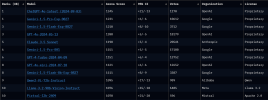arandomguy
Veteran
I wonder what could they improve besides AV1/AV2 support, and maybe even better upscaling (despite already being best-in-class afaik)?
I don’t think NVIDIA has any incentive to improve gaming performance on Shield because of Geforce NOW but I did just realise GFN now supports AV1 which won’t work on current Shield which is unfortunate.
There's an odd issue right now in that to fully support all of Geforce Now and have the optimal experience you need a discrete RTX GPU.
GFNs new VRR support for instance requires an Nvidia RTX GPU I believe.
Even just full link HDMI 2.1 option to leverage GFN at 4k120 has limited options other then a discrete GPU.
Also GFN has some limitations in terms of feature support. GFN doesn't support RTX HDR for instance. You may need a new Shield device to implement it client side. RTX HDR would also be great just as a media playback device.
4k120 10 bit 4:4:4. Updated code and (maybe even h266). Updated wifi (maybe wifi 7). "RTX" GPU with tensor cores for AI features (eg RTX HDR) both current and in the future.
The edge AI push in general may also mean it might make sense to have an Shield AI device. Nvidia is also already rumored to either release SoC intended for Windows either themselves and/or in partnership with Mediatek. Seems that could also be repurposed for something other then a Windows laptop.
Last edited:







